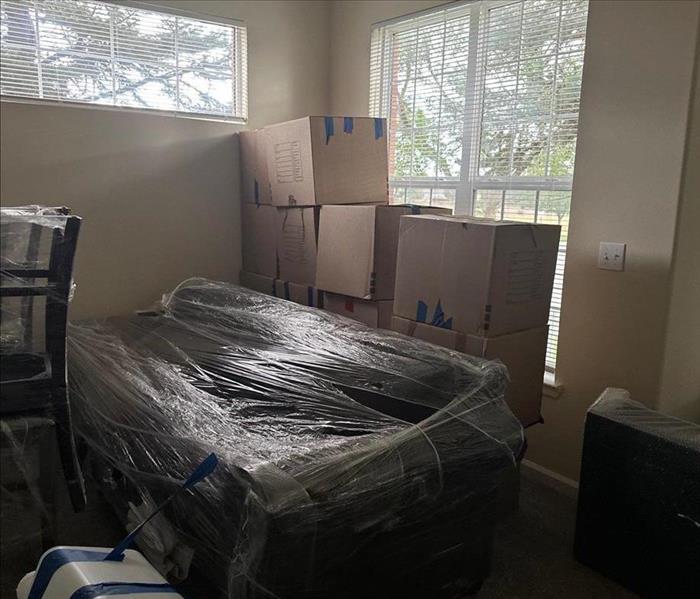Salvaging vs. Replacing: What to Consider After Water Damage
10/16/2024 (Permalink)
Water damage can be a significant concern for homeowners and business owners alike. When faced with the aftermath of a water intrusion, one of the key decisions you'll need to make is whether to salvage or replace damaged items and materials. At SERVPRO®, we understand that this decision can be challenging, so we've outlined some crucial factors to consider when determining whether to salvage or replace items affected by water damage.
Assessing the Extent of Water Damage
The first step in deciding between salvaging or replacing is to thoroughly assess the extent of the water damage. This involves examining all affected areas to determine how deeply the water has penetrated materials and structures. For instance, while drywall and insulation can often be replaced, hardwood floors and structural elements may sometimes be salvaged if the damage is minimal and prompt action is taken. The key is to evaluate whether the damage has compromised the integrity of the material or structure.
Considerations for Salvaging
Salvaging involves restoring items or materials to their pre-damaged condition. This approach can be both cost-effective and environmentally friendly. For example, if you have high-quality furniture, antiques, or flooring that has been damaged, professional water damage restoration services can often save these items through specialized cleaning and drying techniques. Salvaging is usually viable if the damage is limited to surface-level issues or if the items can be dried and cleaned effectively.
When Replacement is Necessary
In some cases, replacement is the more practical option. If the water damage has caused severe structural issues, such as warping or rotting of wood, or if it has led to mold growth, replacement may be necessary to ensure safety and prevent further complications. Additionally, certain materials, such as insulation or carpeting, may be beyond repair if they have been soaked for an extended period or if they have been contaminated by contaminated water.
Professional Assessment and Restoration
Engaging with a professional water damage restoration service is essential in making an informed decision between salvaging and replacing. SERVPRO’s experienced team can conduct a detailed assessment to determine the extent of the damage and recommend the best course of action. Our experts use advanced equipment and techniques to evaluate and restore affected areas effectively. Whether it’s drying out materials, cleaning surfaces, or handling complex restoration tasks, professional services ensure that your property is restored to its original condition, or replaced with quality materials if necessary.
Deciding between salvaging and replacing after water damage involves careful consideration of the extent of the damage, the type of materials affected, and the potential for effective restoration. By working with a professional restoration service like SERVPRO, you can make informed decisions and ensure that your property is properly restored or repaired. Whether you choose to salvage or replace, prompt action and expert guidance are crucial to mitigating the effects of water damage and maintaining the integrity of your home or business.






 24/7 Emergency Service
24/7 Emergency Service
